2010 Toyota Prius: First Drive

Ten years ago if you had told a Toyota engineer or executive that the Prius would be entering its third generation as a vehicle they probably would have laughed at you. While it might be well-known that U.S. automakers mocked Toyota and their “crazy” hybrid, secretly the folks at Toyota also though it would never catch on.
But it did.
Get the Flash Player to see this player.
FAST FACTS
| 1. Fuel economy is 51/48 mpg (city/hwy) with an average of 50 mpg – a 4 mpg improvement over the last model. |
| 2. The 2010 Prius is just $22,000 ($27,500 CDN) to start. |
| 3. EV, ECO and Power modes let you select your driving style and the car will do the rest. |
Unfortunately the design of the 2010 Prius is mostly indistinguishable from the ’09 model, which is a shame because Toyota has done a lot to improve the car. In fact, Toyota is taking a big step with this third-gen platform, in an attempt at moving it from a niche market science project to a mainstream auto.
To do this, the 2010 Prius has two very different sides to it. In order to appeal to a larger audience Toyota is making it easier to use while offering plenty of high-tech gadgets that will draw in up-market customers. And to keep the interest of past Prius owners and environmentally responsible folks, the 2010 Prius gets more fuel economy than ever.
MORE FUEL ECONOMY FOR TRADITIONAL PRIUS BUYERS
So let’s get down to the numbers. The second-gen Prius got 48 mpg city and 45 mpg highway for an average of 46 mpg. The new third-gen model improves on this significantly, with a rating of 51 mpg city and 48 mpg highway, for an average of 50 mpg.
The improvement in fuel economy is the result of numerous small changes throughout the car. For starters, the transmission is smaller and 20 percent lighter, as are the electric motor and inverter. In fact, so many small changes (and one big one) were made to the Prius’s Hybrid Synergy Drive system that it is actually 90 percent new.
Toyota even designed a new regenerative braking system to better recharge the batteries, and thereby increase the amount of stored energy that can be used to help power the vehicle.
Another new feature that is certain to make the car more appealing to prospective buyers in cooler climates is an exhaust heat recirculation system. With previous Prius models, the hybrid system didn’t work as effectively in cold weather and as a result fuel-efficiency was much lower than advertised when the thermometer dropped. This new system uses the heat generated from the exhaust to warm the engine and transmission. Toyota says that at 23 degrees Fahrenheit the new Prius reaches ideal operating temperature 15 minutes earlier.
And yet with technological advances like these the main reason for the 2010 Prius’s increased highway fuel-economy is incredibly simple – it uses a larger engine. That’s right, while normally a larger engine means worse fuel-economy, the bigger 1.8-liter four-cylinder actually saves fuel on the highway because the increase in torque means it doesn’t have to work so hard at speed. Not exactly rocket science, is it?
We mentioned earlier that the design of the 2010 Prius is mostly unchanged and while it is slightly edgier and less like a jellybean, there’s a good reason for this. Toyota believes it has found the optimum shape for an aerodynamically efficient car and so it has only made small changes to the body. These include modifications to the front underbody covers, small wings on the underside at the rear of the car to better direct airflow, changes to the wheel well liners and even to the design of the wheels. The result is a drag coefficient that has dropped from 0.26 to 0.25.
With the Prius’s new fuel-economy numbers it continues to establish itself as the undeniable fuel-economy leader. Toyota likes to push this point as Ford has been claiming the Fusion Hybrid is the most fuel-efficient mid-sized sedan. The truth of the matter is that the Prius is more efficient and is technically a mid-sized vehicle. It’s not technically a sedan though because of its rear hatch design.
PLENTY OF ADDITIONS TO ATTRACT MAINSTREAM CONSUMERS
In terms of giving the Prius more mainstream appeal, Toyota has gone to great lengths to woo consumers. By offering affordably priced entry level models, Toyota is hoping to gain a larger segment of the market, while at the same time offering high-end options to attract more up-market clients. This is smart, as past Prius models have already developed quite a following with the well-healed.
Included as options are things like a backup camera and Toyota’s Intelligent Parking Assist that parks the car for you. Also available is Dynamic Radar Cruise Control that keeps a set distance from the car ahead. Another option is a solar panel roof, which generates enough power to operate the fans inside the car when it is parked, meaning that it won’t be so hot when you get in it, and the air conditioner won’t have to work so hard. And speaking of air conditioning, the 2010 Prius now comes standard with remote keyless entry and a push-button ignition smart key system that lets you turn on the A/C remotely before you enter the car!
Safety minded individuals will appreciate the Pre-Collision System that automatically applies the brakes if a collision is imminent. And younger buyers are sure to love the iPod-like Touch Tracer controls on the steering wheel that can be used to operate the audio system, climate control and even the many screens on the ECO Drive Support Monitor.
The 2010 Prius also has more room than the previous model. Cargo room has been increase by 0.4-inches in length and 2.2-inches in width, thanks to the smaller size of the electric components. The interior space doesn’t grow any, but the front seats have been contoured to make more room for rear passenger knees. Surprisingly, even with the sloped roof, headroom is sufficient for adults – unlike in the Honda Insight.
On top of all this, the Prius continues to offer amazing fuel-economy, which is popular with everyone when the price of gas goes up. Oh, and that larger engine also means more power. So while mileage has been improved, power actually gets an increase of almost 30 percent, with 134hp up from 110. That isn’t going to attract any gearheads, but the added power makes for a better daily driving package with a now reasonable 0-60 mph time of 9.8 seconds – down from 10.5.
SELECT YOUR DRIVING MODE
Inside the Prius is still quite basic looking, despite all the goodies (both standard and optional). One reason for this is the car’s dash layout with a centrally located “display zone,” which means that directly in front of the driver there is a giant swath of el-cheap-o plastic. The steering wheel isn’t exactly premium either and the fabric used on the doors and center armrest looks and feels like felt used for making crafts in a grade-one classroom. Making matters worse is the fact that all the cool digital displays are colored with a sort of pea soup lighting that looks like a washed out computer monitor from the ‘80s.
As though the central display wasn’t niche market enough, Toyota continues to use a tiny and bizarre shift mechanism to get into Drive or Reverse and a push-button to put the car in Park. These quirky operational aspects are certainly not helping Toyota to convince consumers that the Prius is a mainstream auto.
What will appeal to Toyota’s less-traditional Prius consumer are the three optional drive modes: EV, ECO and Power.
The EV mode can be used at low speeds when the batteries have a significant charge in them and actually allows the car to drive under just electric power for a short period of time. In ECO mode throttle response is significantly limited, ensuring a fuel-efficient drive. The Power button does quite the opposite, allowing for a more responsive pedal and full use of the rpm range for times when you either need it or want it.
Of the three modes we really did find the EV mode to be more of a marketing gimmick than a practical fuel-saver, especially as during city driving ECO mode keeps the batteries sufficiently drained so that EV mode is never available.
THE COMPETITION
Toyota is confident in what they have done with the 2010 Prius and to prove it they invited us to try the car back-to-back against its two main competitors: the Honda Insight and the Ford Fusion Hybrid. In a fuel-economy challenge scenario we managed 54 mpg in the Honda, 55 mpg in the Ford and an impressive 65 mpg in the Prius. Mind you, the incredibly slow driving we did that day does not represent real world use, so we also took the Prius out for a spirited spin and paying no attention to fuel-economy or driving style we managed 44 mpg. We expect normal use for most owners will result in a number somewhere between the two extremes.
What we really liked about the Prius in this comparison was the ability to push the ECO button and not have to worry about our driving style – unlike in the Fusion and Insight, where you constantly need to pay attention to how you are driving to get the best mileage.
THE VERDICT
When it comes to hybrids, the 2010 Prius is the most fuel-efficient by a significant margin. If maximum miles per gallon and minimum impact on the environment are what you are after then this is your car.
Toyota has done a lot to give the third-generation Prius a more mainstream appeal and we have no doubt it will attract a new group of buyers. With an economy-car feel to it the Prius is still a hybrid first and a mid-sized sedan second. Competitors, like the Fusion Hybrid, deliver the opposite.
At $5,000 less, however, the cost of the 2010 Prius may just be its most-appealing mainstream factor. Undercutting even the past model, the entry-level Prius costs just $22,000 ($27,500 CDN).
PLUS
- Fuel-economy
- Price
- ECO mode means you don’t have to worry about your driving style
MINUS
- Cheap interior
- Economy-car ride quality
- Strange and unfamiliar controls

With AutoGuide from its launch, Colum previously acted as Editor-in-Chief of Modified Luxury & Exotics magazine where he became a certifiable car snob driving supercars like the Koenigsegg CCX and racing down the autobahn in anything over 500 hp. He has won numerous automotive journalism awards including the Best Video Journalism Award in 2014 and 2015 from the Automotive Journalists Association of Canada (AJAC). Colum founded Geared Content Studios, VerticalScope's in-house branded content division and works to find ways to integrate brands organically into content.
More by Colum Wood
















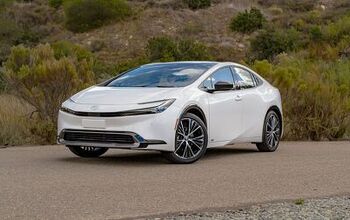
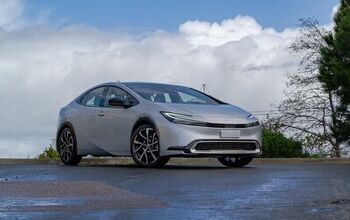
![2012 Toyota Prius V Review [Video]](https://cdn-fastly.autoguide.com/media/2023/06/26/06115/2012-toyota-prius-v-review-video.jpg?size=350x220)





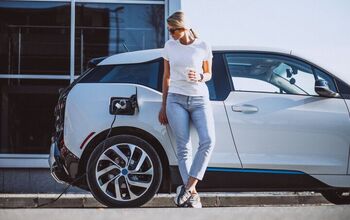

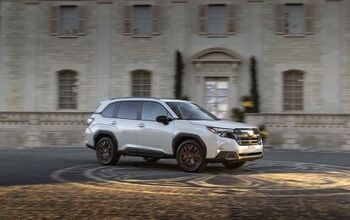
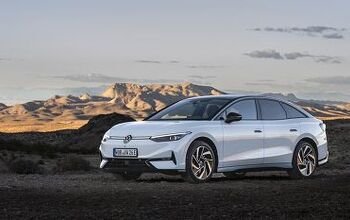

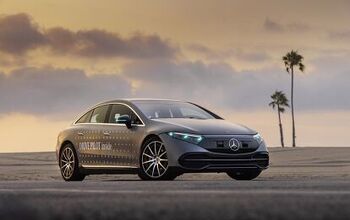
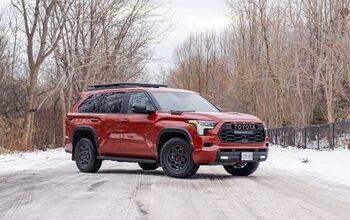
Comments
Join the conversation